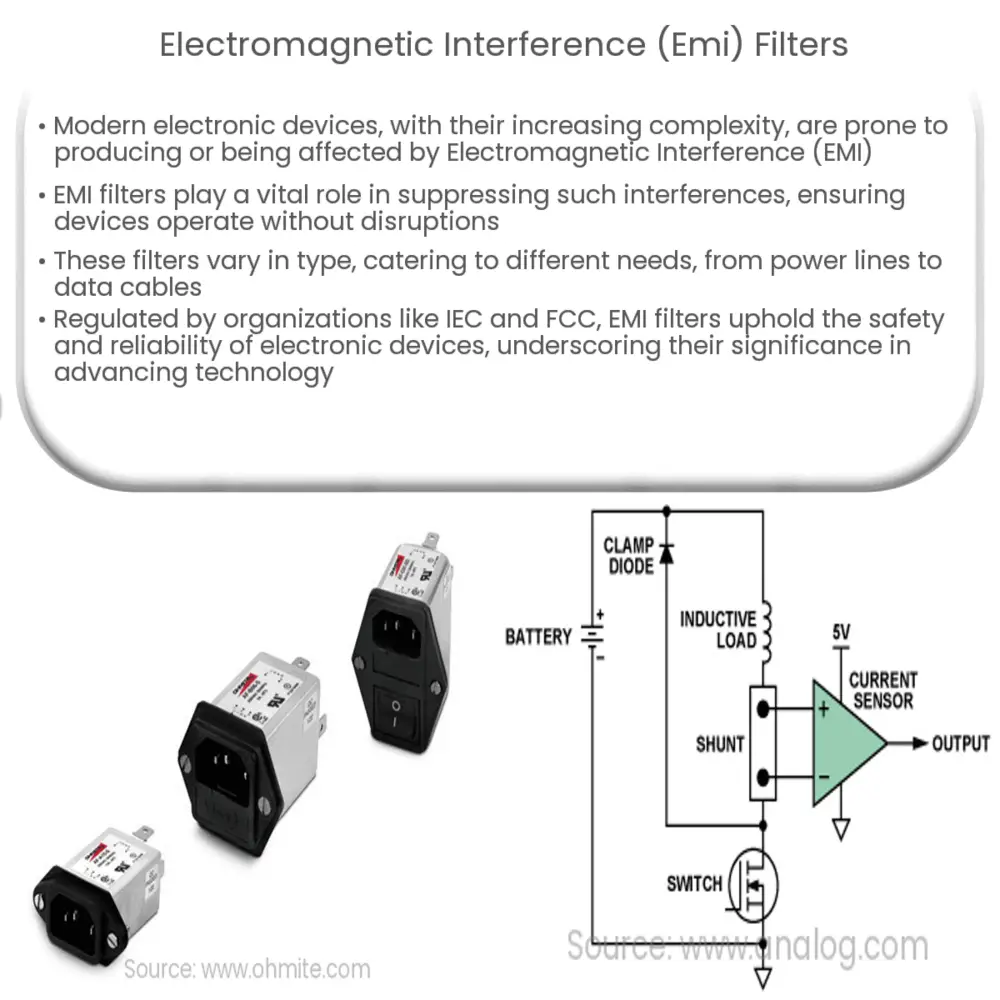Explore the importance of Electromagnetic Interference (EMI) Filters in electronic devices, their types, operation, and regulatory standards.

Understanding Electromagnetic Interference (EMI) Filters
At the heart of modern technology lie various electronic devices that contribute to the enhancement of our everyday lives. However, with the increasing complexity of these devices, there is a higher likelihood of them producing or being susceptible to Electromagnetic Interference (EMI). This is where EMI filters come into play.
What is Electromagnetic Interference (EMI)?
Electromagnetic Interference, often abbreviated as EMI, is a disturbance generated by an external source that impacts an electrical circuit through either electromagnetic induction or radiation. This disturbance can cause problems ranging from minor annoyances like a fuzzy television picture to serious issues like data losses in computers or operational errors in medical equipment.
The Importance of EMI Filters
EMI Filters are designed to suppress the interference caused by these devices to a level that allows them to operate as intended without causing disruptions or receiving them. They are crucial components used in a multitude of electronic devices, both consumer and industrial, to attenuate or reduce the interference generated in a circuit.
Types of EMI Filters
- Power Line EMI Filters: These are commonly used in electronic devices that require power from an AC power source. They help in reducing the EMI signals that can cause interference in other devices or the power grid itself.
- Data Line EMI Filters: These filters are applied to data lines like USB, HDMI, or Ethernet cables to prevent EMI from distorting the data being transmitted.
- Feedthrough Capacitors: A type of EMI filter, feedthrough capacitors offer high-frequency filtering for circuits.
Understanding the various kinds of EMI filters and their applications is key to recognizing their role in electronic devices. The next part of this article will delve into the operation of these filters, how they are designed, and the standard regulations concerning them.
Operation of EMI Filters
EMI filters work by presenting a low impedance path to the electromagnetic interference, effectively shorting out the unwanted signal to ground. They consist of various components like capacitors and inductors, that either block or short out high frequency noise, allowing only the desired frequencies to pass through.
Designing EMI Filters
The design of an EMI filter involves careful considerations like the type of device, the source of interference, and the kind of interference. In power line filters, for instance, a combination of capacitors and inductors are used to filter out both differential mode and common mode noises. In data line filters, a mix of different filtering techniques might be employed depending on the type of data line and the kind of noise expected.
EMI Filter Standards and Regulations
Due to the critical role that EMI filters play in the operation of electronic devices, they are governed by a series of regulations and standards. These are set up by various organizations like the International Electrotechnical Commission (IEC), the Institute of Electrical and Electronics Engineers (IEEE), and national regulations like the Federal Communications Commission (FCC) in the United States. These regulations aim to maintain the safety, reliability, and compatibility of electronic devices in various operating environments.
Conclusion
In conclusion, Electromagnetic Interference (EMI) Filters are integral components in the realm of electronics, promoting the smooth functioning of devices by limiting the interference caused by or to them. From power lines to data cables, EMI filters ensure that the wave of technological progress does not come at the cost of efficiency or safety. As technology continues to evolve, the importance of understanding and effectively managing electromagnetic interference will only grow, reinforcing the importance of these critical components.

